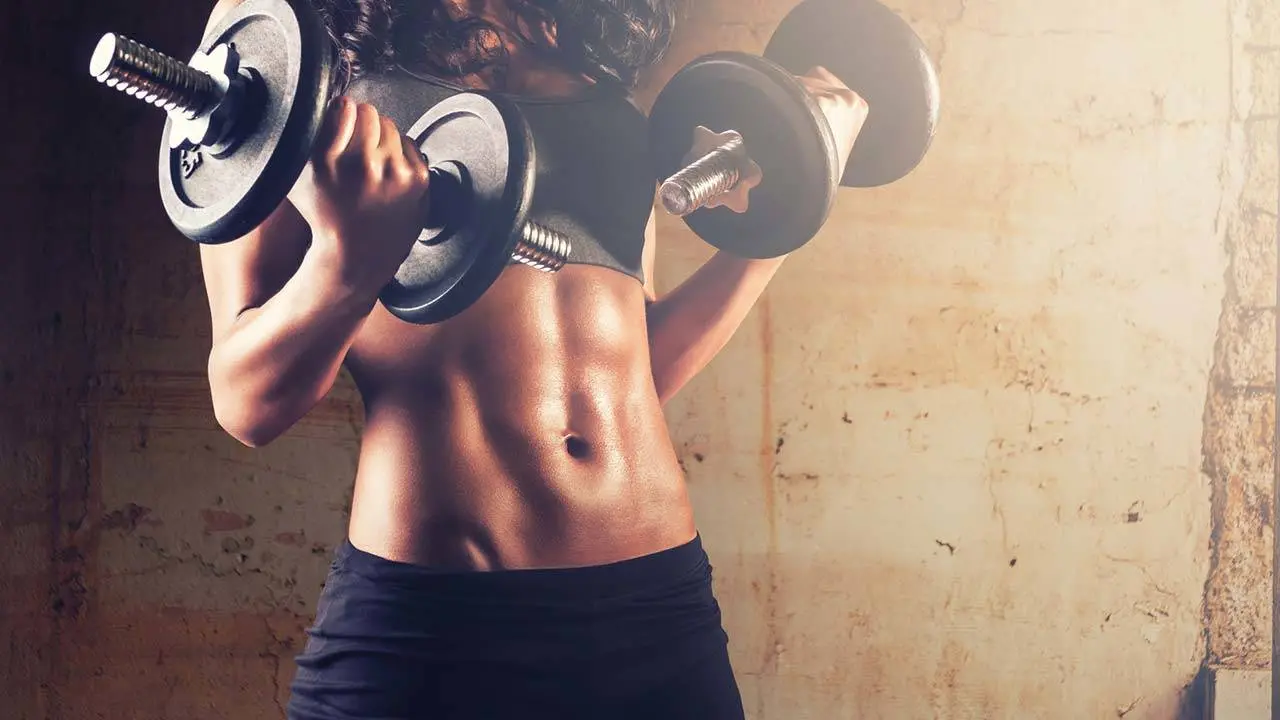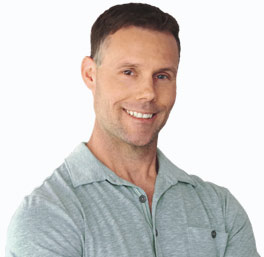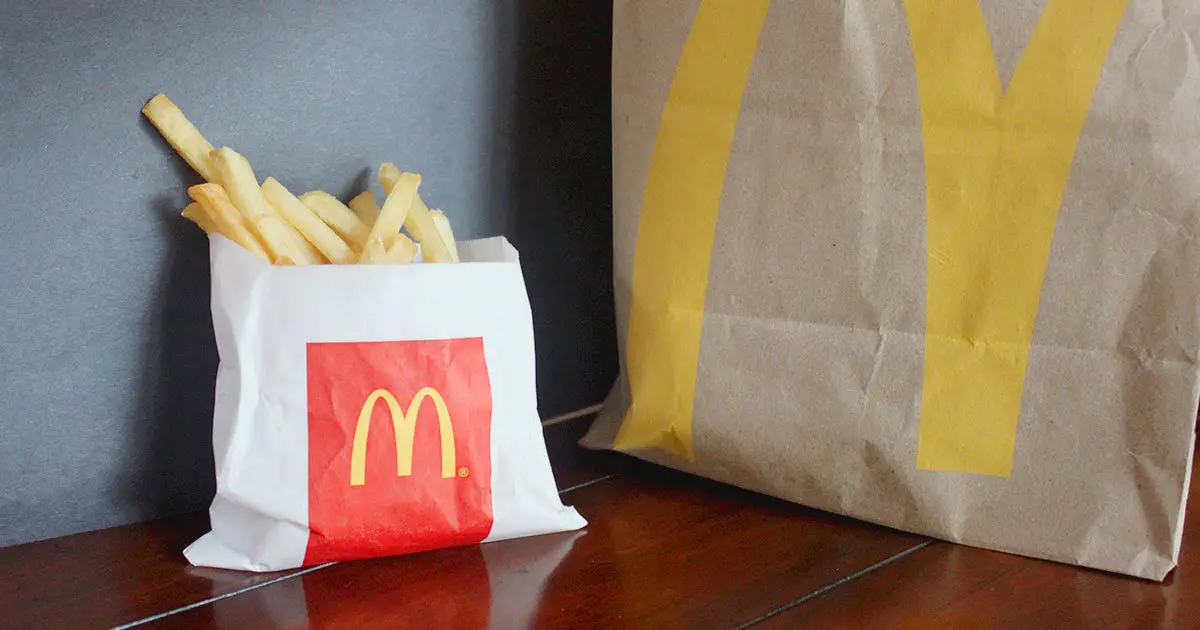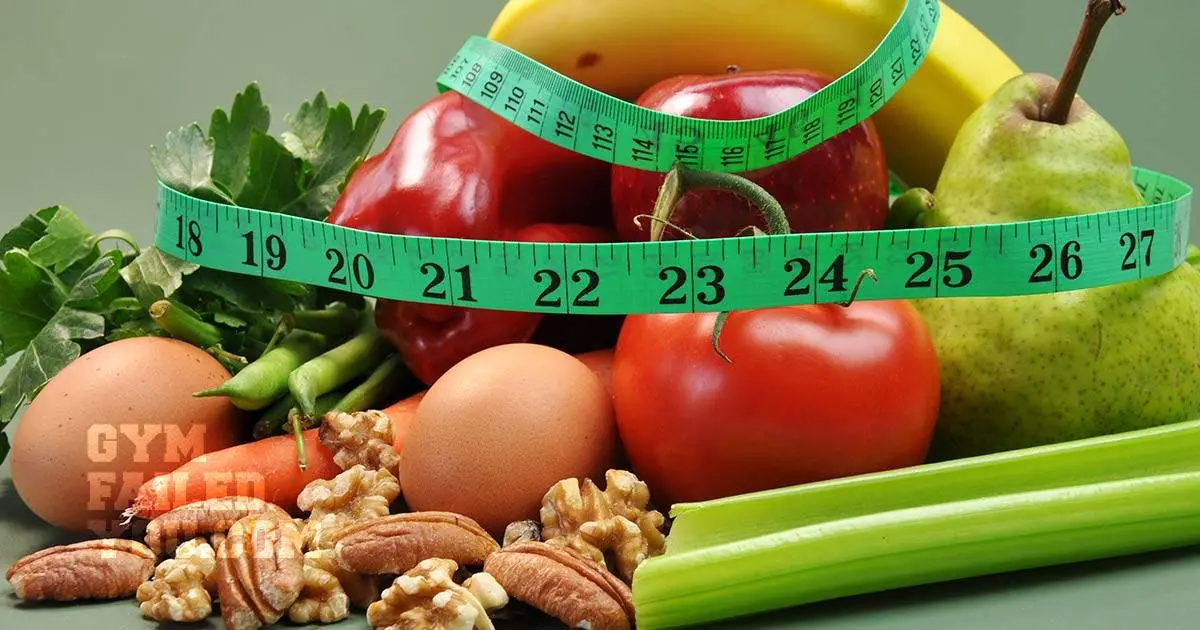A six-pack. Abs. Core. Your abdominal muscles get called lots of different names. It is also the one muscle group that I get asked about the most, from men and women. Everyone wants to know what is the best way to get abs.
Over the last twenty-eight years, the most common related question is: Should I do abs every day?
And here’s my honest, educated, and experienced answer: No!
Primary Takeaways
- You can’t exercise your way to an amazing set of abs if you’re eating poorly.
- Diet is the most important factor when trying to gain a “six pack.”
- Cutting your sugars is the first step to losing fat.
The obsession with six pack abs
I believe this question has evolved from those old bodybuilding magazines from decades ago featuring Michelangelo-like physiques. And more to date, all those “follow my routine” on Instagram.
People made the natural assumption that you must train abs every day to obtain abs like those seen in these fitness publications. But, sadly all of the ab training in the world will not sculpt your midsection like those pictures. There are no quick ways to get abs either. This was true in the past and it’s no different today.
Studies over the years show similar results that training the abdomen results in more tone and firmness, but no change in body weight, BMI, or skinfold thickness on the abdominal region.
That said, a global strength training program has shown time and again to lower body fat mass systemically, which of course includes abdominal fat. But that doesn’t answer our question.
So what is the best way to get abs?
The truth is that abs like what you see in magazines are achieved through very strict dieting. In fact, this strict dieting is usually more strict than most of you are used to doing.
We’ll look more closely at this later in the article.
I assure you, those models dieted down for about twelve weeks prior to their photoshoot to look like that (and they were already really lean). I partook in that world for a long time in my past, and I’ve seen what it takes behind the scenes.
In other words, the best way to get abs starts with exercising control of our appetite! See my article on the difference between appetite and hunger.
Should I Even Exercise Abs Then?
Don’t get me wrong. Good ab training is very important.
Also, if you’re executing all of your lifts properly and engaging your torso for every workout, your abs are getting worked well.
I think I turn over in bed on occasion and mumble to myself, “Squeeze your ribcage, suck in your belly button and engage your core!”. If you’re a client of mine, you’ve heard me say it ad nauseam.
At Paradigm fitness we do focus on ab specific exercises for two key reasons:
- It’s part of teaching you how to engage your core for all of our training.
- We know you like those type of exercises.
That being said, I know you’ve all heard me repeat this piece of advice so much that you’re ready to punch me: “You can’t spot reduce fat, it’s all about what you eat.”
Let’s review the muscles that make up your abs
The list presented are the more prominent muscles of the abdomen just as a quick review. There are more, but we’ll stick to the list below for simplicity.
Rectus Abdominis:
This is the most superficial abdominal muscle making it the most visible part of the abdomen. It originates in the top part of the pelvis (pubic crest and symphysis) and inserts on the xiphoid process (bottom of the sternum and one of my favorite words) as well as the ribs.
Its job is to flex and rotate the lumbar region of the vertebral column, as well as stabilize the pelvis while walking and increase intra-abdominal pressure.
The tendinous intersections run horizontally along with the rectus abdominis, which gives it the “rippled” effect aesthetically.
Transversus Abdominis:
As far as I’m concerned, this is one of the most important abdominal muscles for minimizing low back pain (as far as the abdomen is concerned). It is the deepest muscle of the abdominal wall and because of the horizontally aligned fibers, hugs your midsection like a girdle.
It’s number one job is to compress the abdominal contents, which help keep the lower back in proper, safe alignment.
Internal Oblique:
It aids in the rotation of the trunk, lateral flexion as well as increasing intra-abdominal pressure.
External Oblique:
It also aids in the rotation of the trunk, lateral flexion, and intra-abdominal pressure.
What about the abdomen’s incorporation during big lifts
This is a ridiculously relevant point!
Doing big compound lifts that require the extreme firing of the abdominal muscles simply to keep the spine in alignment during a big lift, works them evenly and thoroughly.
Talk to any powerlifter and they’ll probably state they barely do any ab specific exercises.
Could they improve their lifts by doing specific work on their transverse? For sure and no doubt, some do just that to make improvements.
The point is that if you’re doing big, heavy compound lifts (deadlift, back squat, front squat, etc.), your abdomen is getting worked well.
Let’s finally talk about food and getting abs (the most important component to getting abs)
So, what is the first thing that needs to be eliminated when looking for the best ways to get abs?
For years, my expression has been “cut your sugars” ad nauseam! And there’s real relevance to making this the first step.
If you’re consuming a poor diet then the chance of exposing any abdominal muscle is negated. It is very rare that individuals can eat poorly and still stay lean.
Every metabolism varies slightly, but overall, a generalized and graduated meal plan can be applied to anyone with great results.
Dietary changes for photoshoot abs – the finer points
Back in time, when I used to put fitness competitors and bodybuilders on stage or prepared a model for a photoshoot, I modified their meal plan weekly initially, and then daily based on aesthetics as they progressed.
It always started twelve to sixteen weeks out and went in the following order:
- Cut all sugars (includes hidden sugars).
- Gradually diminish carbohydrate intake while raising protein and fats.
- Cut carbohydrates and raise protein and fats more.
- Maintain protein, diminish fats and cut sodium.
- Diminish water intake 24 hours out.
- Bring carbohydrates back into the picture the day of competition or photoshoot without adding water back into the diet.
This is a very generalized overview and required constant monitoring to prevent peaking before a competition or looking flat during a competition. Is the last part of it healthy? No!
But, here’s my point… many of the models in the magazines, on websites, or on Instagram (pick your social media) have taken many of these steps to achieve the image you’re seeing (or worse steroids). Then they try to sell you a supplement claiming that it’s responsible for that amazing physique.
Of course, this infuriates me! Okay, I’ll get off my soapbox now.
Can you get abs from intermittent fasting?
Yes, intermittent fasting is one tool in your arsenal for bringing your abs to the surface. I have had success with some clients who are in their 40’s and 50’s by utilizing intermittent fasting.
There are several ways to approach this method, so do your homework.
You can learn more about intermittent fasting in my article Intermittent Fasting 101: All You Need To Know [The Definitive Guide].
What about cardio work to get abs?
This is a really interesting topic to discuss.
In the past, I instructed my bodybuilders to only do a long slow duration as their cardiovascular exercise. I didn’t want their VO2 to elevate too much since the higher intensity could compromise muscle tissue when their “fuel tanks” were so low.
Let me clarify what I mean. Their blood sugar is super low and there are no carbohydrates entering the system, and during high-intensity cardio exercise, which elicits a high VO2, we don’t burn fat.
So, what does that leave as a fuel source?
This is where we enter into gluconeogenesis and turn the stored and available protein into sugar (or ketones).
Where does this come from?
Our muscle for the most part. You can read more about this on my article “How to get into ketosis fast and staying there [safely]”.
But if I had them do a long slow duration, they could diminish the use of sugar as a fuel source and utilize more stored fats. It worked well. This is also the reason I like to have clients walk first thing in the morning before they eat their first meal.
We’ll talk more about exercise selection in the next section.
So, what’s the best exercise type to get abs? Cardiovascular or strength training?
Okay, so you’re not preparing for a competition and you have a long way to go, then what?
As far as cardiovascular work is concerned, this is where I suggest doing high-intensity interval training.
It’s the best bang for the buck.
But more importantly, strength training should be your priority. Overall, it’s the second biggest bang for the buck in fat loss (after diet). There are just too many positives to strength training to discount it as an important addition to your weekly activity. To name a few:
- Balanced joints
- Stronger bones (lowers risk of osteoporosis)
- Easier movement
- Increased HDL and decreased LDL cholesterol
- Increased testosterone levels
- Fat loss
- Diminished sarcopenia (loss of muscle with aging)
- Reduced risk of heart disease
- Reduced risk of arthritis
- Reduced risk of type 2 Diabetes
- Improved sleep
- Improved self esteem
- Improved cognition
I could go on and on, but the above benefits are not the point of this article.
My order of importance for fat loss in the mid section:
- Dietary control (cut sugars first and keep carbohydrates low).
- Strength training two to three days a week.
- Long slow duration cardiovascular work if your already lean.
- High intensity interval training if you have more weight to lose.
You can read more about that in my article The best weight loss exercise routine.
The Conclusion on How to Get Abs
The best way to get abs is mostly through dieting, not exercising.
We looked at cutting sugars first and then some of the steps to taper carbohydrate intake down while ramping up protein and fats. All the while keeping your vegetable intake up.
However, you should focus beyond the idea of getting ripped. Continue to do core exercises. While it may not get you that six-pack, a strong core usually means a pain-free back and good posture all of your life.
Note that I did not mention the “perfect ab exercise” in this article. Because you can plank, crunch or do every fancy ab exercise in the book, but it will not contribute to the loss of fat covering your abdomen, period!
Your functional ability is far more important than your aesthetics. That may not be the first thought when you’re in your twenties, but it will be when you’re in your forties and up.
You’ll thank me when you’re older.
There’s so much to be said for our longevity and ability to move comfortably as we age.
Research and Resources on the Best Way to Get Abs
Boutcher, S; High-Intensity Intermittent Exercise and Fat Loss, Journal of Obesity, Volume 2011, Article ID 868305, 10 pages
Randy W. Braith, Kerry J. Stewart, Resistance Exercise Training: Its Role in The Prevention of Cardiovascular Disease, Circulation: Contemporary Reviews in Cardiovascular Medicine, June, 2006; 113:2642-2650
J. P. Despres, M. C. Pouliot, S. Moorjani, A. Nadeau, A. Tremblay, P. J. Lupien, G. Theriault and C. Bouchard, Loss of abdominal fat and metabolic response to exercise training in obese women, American Journal of Physiology, Volume 261, Issue 2, August 1991. Pages E159-E167
Marieb, Elaine. Human Anatomy and Physiology, The Benjamin/Cummings Publishing Co. 1995
Patrick J. O’Connor, Matthew P. Herring, MS, Amanda Caravalho, et all, Mental Health Benefits of Strength Training in Adults, American Journal of Lifestyle Medicine, 2010 Volume: 4 issue: 5, page(s): 377-396
Porcari, John P., Jennifer Miller, Kelly Cornwell, Carl Foster, Mark Gibson, Karen McLean & Tom Kernozek, The Effects of Neuromuscular Electrical Stimulation Training on Abdominal Strength, Endurance, and Selected Anthropometric Measures, J Sports Sci Med. 2005 Mar; 4(1): 66–75.
Rebecca Seguin BS, CSCS, Miriam E Nelson PhD, The benefits of strength training for older adults, American Journal of Preventive Medicine, Volume 25, Issue 3, Supplement 2, October 2003, Pages 141-149
A. Tremblay, J.-A. Simoneau, and C. Bouchard, “Impact of exercise intensity on body fatness and skeletal muscle metabolism,” Metabolism, vol. 43, no. 7, pp. 814–818, 1994


![What is the Best Way to Get Abs? [Hint: It's Not Exercising] 1 Best Way to Six Pack Abs](https://www.gymfailedyou.com/wp-content/uploads/2018/03/best_way_six_pack_abs.jpg.webp)
![What is the Best Way to Get Abs? [Hint: It's Not Exercising] 2 Sit-ups to Get Abs](https://www.gymfailedyou.com/wp-content/uploads/2018/03/sit-ups_to_get_abs.jpg.webp)
![What is the Best Way to Get Abs? [Hint: It's Not Exercising] 3 Abdominal Muscles](https://www.gymfailedyou.com/wp-content/uploads/2018/03/abdominal_muscles.jpg.webp)
![What is the Best Way to Get Abs? [Hint: It's Not Exercising] 4 Exercises to Get Abs](https://www.gymfailedyou.com/wp-content/uploads/2018/03/Exercises_to_get_abs.jpg.webp)
![What is the Best Way to Get Abs? [Hint: It's Not Exercising] 5 How Much Protein Should You Eat?](https://www.gymfailedyou.com/wp-content/uploads/2018/04/how_much_protein.jpg.webp)
![What is the Best Way to Get Abs? [Hint: It's Not Exercising] 6 Cardio Workout to Get Abs](https://www.gymfailedyou.com/wp-content/uploads/2018/03/cardio_to_get_abs.jpg.webp)
![What is the Best Way to Get Abs? [Hint: It's Not Exercising] 7 Cardio vs Strength Training For Abs](https://www.gymfailedyou.com/wp-content/uploads/2018/03/cardio_vs_strength_training_for_abs.jpg.webp)



Great article. Any ideas for obtaining flat abs?
I’ve been training mine with weights but now when relaxed they bulge… really don’t like the look.
Training your abnormal muscles with weight will thicken the predominant “show” muscle, the rectus abdominis. This helps them stand out when one is lean, but it will also thicken your thoracic core. Perhaps this is what you mean by “them bulging” when relaxed. If you’re already lean from eating well, try sticking to body weight core exercises to minimize the hypertrophy. Or just stick to moderately heavy compound lifts for the rest of your muscle groups and skip core. I assure you, doing quality compound lifts through their full range of motion will still keep your abdomen strong. I hope this helps.